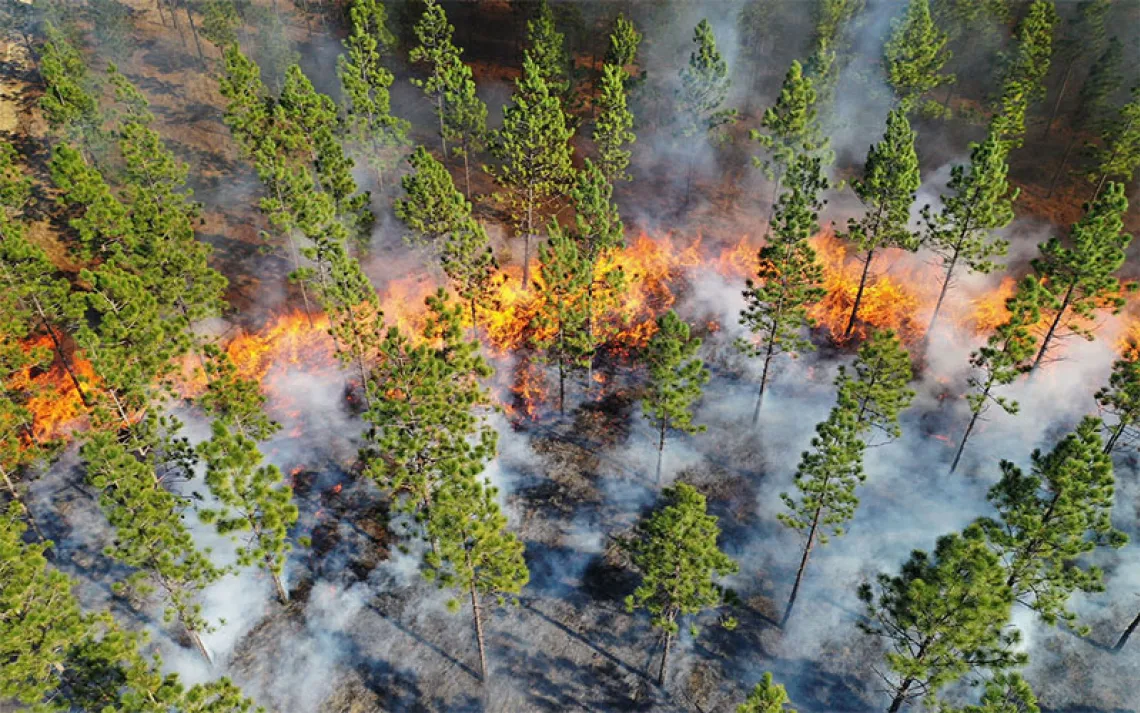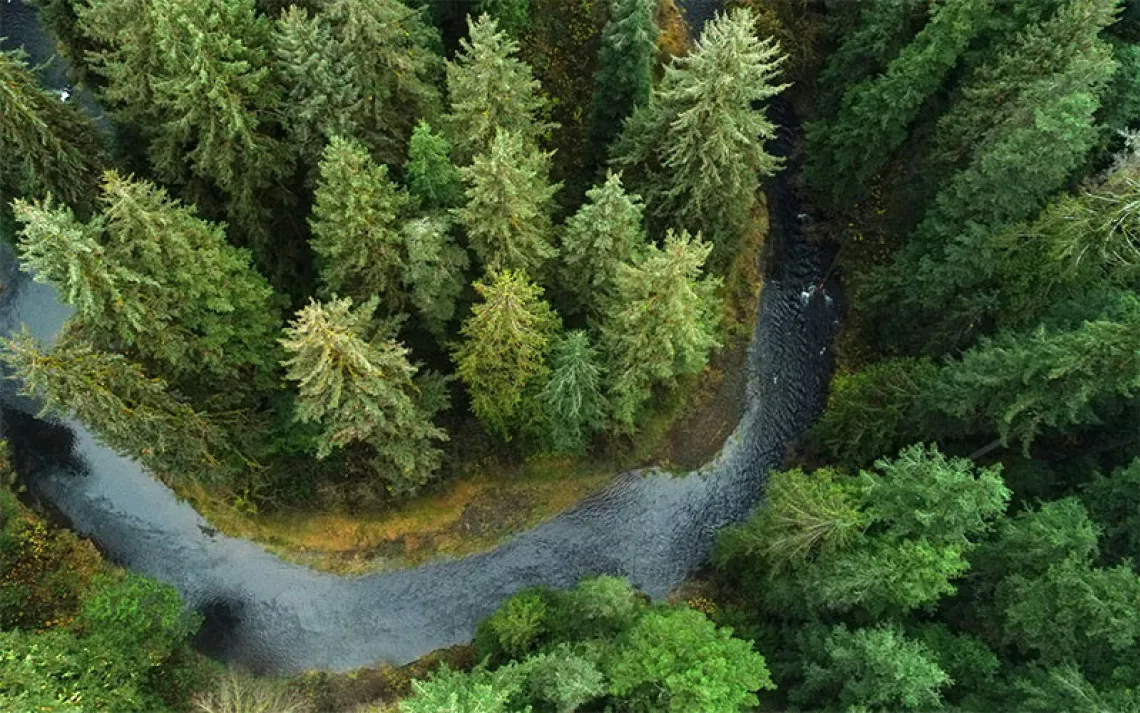Conservation Groups Seek to Block Logging Projects in Giant Sequoia National Monument
Sierra Club and others file lawsuit against US Forest Service over postfire logging
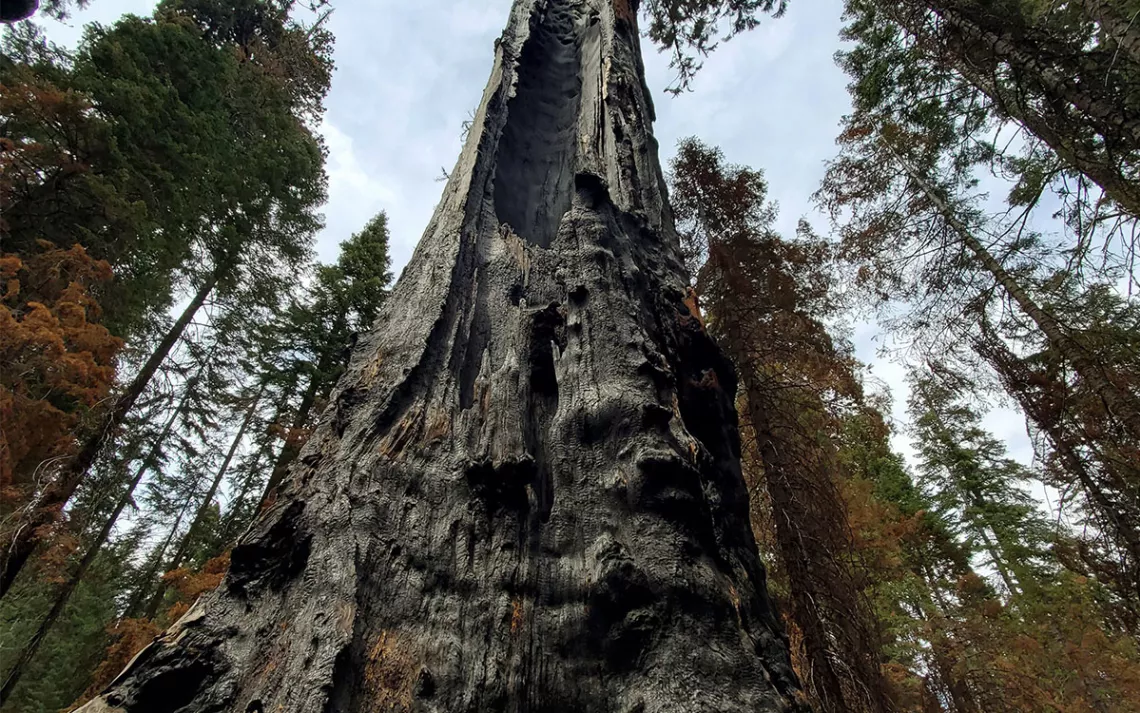
An old sequoia burned several times by fire. | Photo by René Voss
The sequoia groves and endangered animals found in California’s Giant Sequoia National Monument are imperiled by a pair of logging projects, conservation groups argue in a new lawsuit that asks a federal judge to put a stop to the proposed tree cutting.
The lawsuit—filed Thursday, February 22, by the Sierra Club, Earth Island Institute, and Sequoia ForestKeeper against the US Forest Service—calls the proposed logging “unprecedented” in the national monument. The lawsuit challenges two proposed logging projects that authorize the felling and removal of what’s estimated to be tens of thousands of trees from over 13,000 acres of public forests within large wildfire burn scars. Most of the planned logging would happen in the national monument, and some of it in the neighboring Sequoia National Forest.
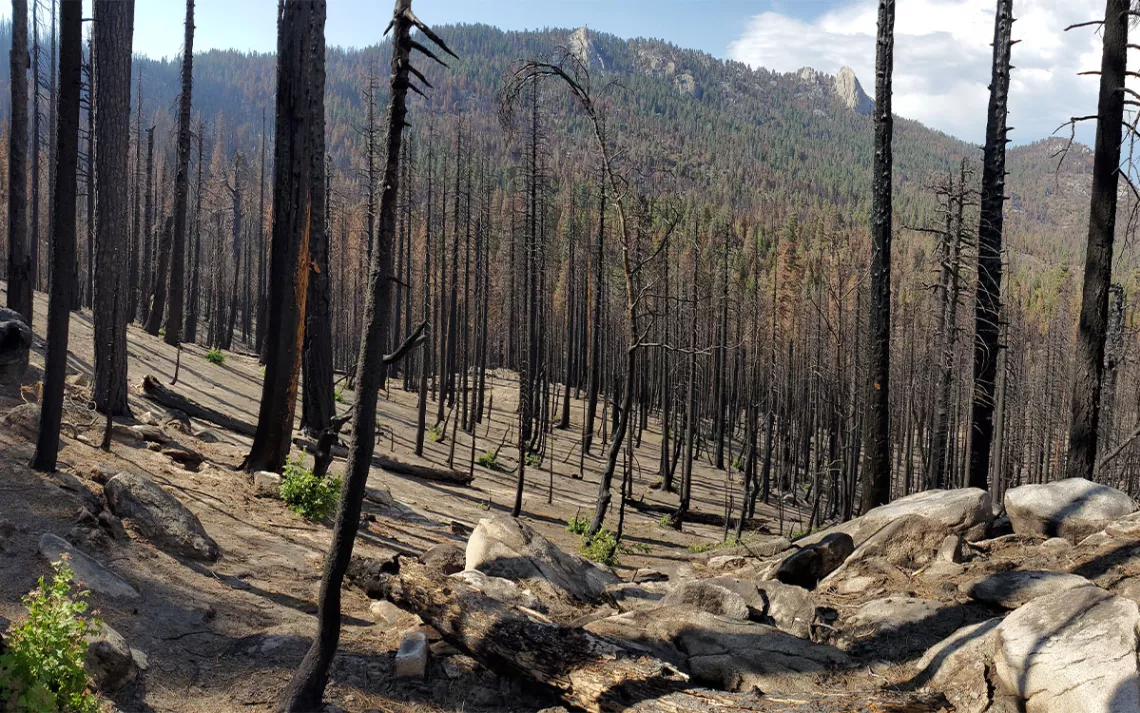
A high-severity patch in the middle of a grove, looking north. | Photo by René Voss
At stake is the well-being of an ancient and massive tree species: giant sequoias, Sequoiadendron giganteum, the largest tree on Earth, with a lifespan of over 3,000 years. They grow naturally only along a 60-mile band of the western Sierra Nevada in California. Giant Sequoia National Monument, near Sequoia and Kings Canyon National Parks, covers over 328,000 acres of that habitat and is home to 33 giant sequoia groves. Logging would also pose risks to a pack of gray wolves that moved into the monument sometime last year as well as to Pacific fishers, a tree-dwelling mammal in the weasel family.
Aaron Isherwood, managing attorney for the Sierra Club, said the two logging projects will “trample and remove the very sequoia trees, wildlife, and other resources that the monument was designed to protect.” The Sierra Club advocated for the creation of Giant Sequoia National Monument, established in 2000, and was successful in a later fight to keep timber sales out of early management plans.
“We have, basically, a large commercial logging project disguised as a restoration project,” Isherwood said about what the Forest Service is currently planning. “And to be clear, there are some aspects of the project that we support. Prescribed fire to reduce fire risks is something we generally support. Removing brush and small-diameter trees, especially near homes—that’s something we support. But what we have here, in addition to a little bit of good stuff, is a whole lot of bad stuff that involves thousands of acres of logging the monument and removing large trees, old trees, that are in some instances several hundred years old.”
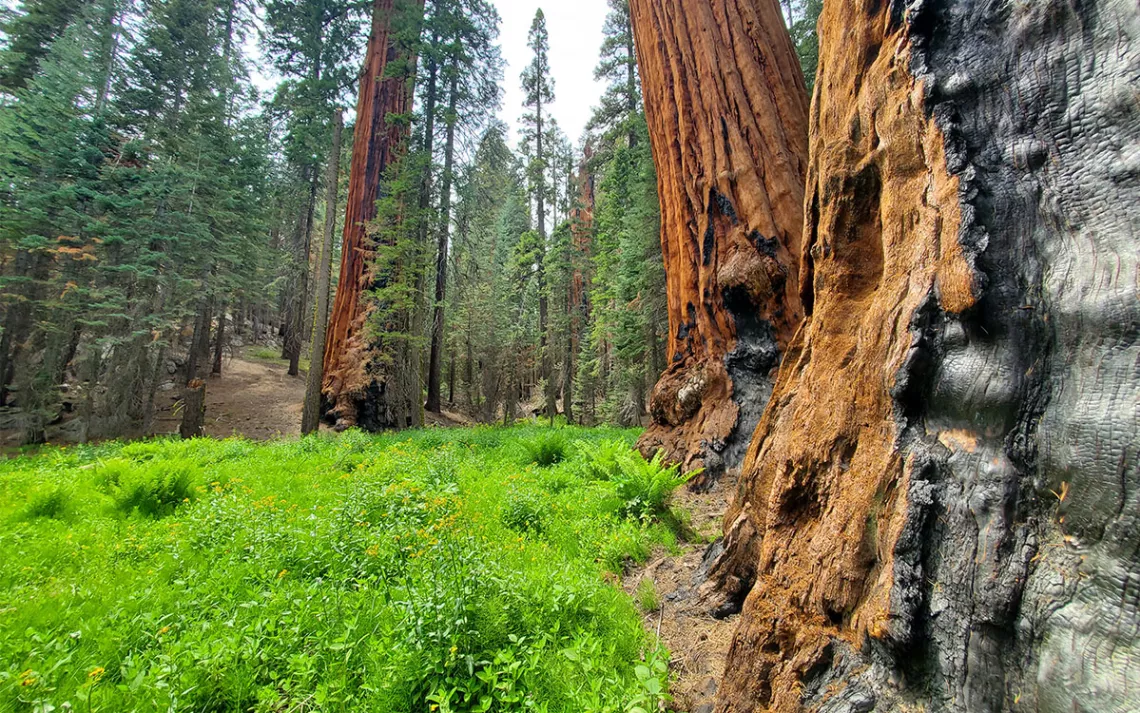
Freeman Creek meadow surrounded by giants. | Photo by René Voss
The presidential proclamation that created the monument states that aside from some uses as firewood, trees may be removed there only “if clearly needed for ecological restoration and maintenance or public safety.” Differing views about what that means and how to go about it are the crux of the lawsuit.
The lawsuit alleges that the Forest Service violated the National Environmental Policy Act by preparing only an environmental assessment instead of a more rigorous environmental impact statement, and by wrongly defining the purpose of the projects too narrowly and without exploring a range of alternatives. The lawsuit also alleges that the agency violated the National Forest Management Act by proposing actions that are contrary to the Forest Service’s own forest plan for the monument—and beyond what was authorized in an emergency decision memo by the chief of the Forest Service.
“Further,” the lawsuit states, “the Forest Service failed to respond to a large and growing body of scientific evidence and opinion, which concludes that post-fire logging makes wildfires spread faster and/or burn more severely, and this puts nearby communities at greater risk.”
Officials with the Forest Service did not respond to a request on Thursday to comment on the litigation.
“Giant sequoias are some of the most iconic trees in the United States, and they should be preserved for generations to come,” said Alex Craven, Sierra Club’s forest campaign manager. “Simply put, these projects as proposed won’t help us achieve that. Moreover, they threaten the vulnerable and endangered species who call these landscapes home.
“From their scale to their methods to the process used to approve them, these projects are dubious at best and at worst could ultimately harm the very sequoia trees the Forest Service has a responsibility to protect. There are clear legal requirements for managing our national forests, and it’s vital that the Forest Service follow those processes.”
Giant sequoias have increasingly been in the public spotlight because of a series of large wildfires that burned thousands of them in recent years. One preliminary mortality report estimated that up to nearly one in five of all large giant sequoias had perished, or would die, from wildfires in 2020 and 2021 alone. Those fires include the Castle Fire and the Windy Fire, whose footprints would be logged in the two Forest Service projects of the same name now being challenged in court: the Castle Fire Ecological Restoration Project and the Windy Fire Restoration.
Many of the large trees targeted for removal in old-growth areas are dead trees, which are beneficial to many species, including Pacific fishers, which use hallowed cavities as dens. The lawsuit states that the Forest Service doesn’t differentiate between dead and live trees in its guidelines concerning tree diameter limits for logging. The complaint also highlights how the monument’s management plan differs from language in the projects concerning dead trees. The monument’s overarching management document states that dead trees, called “snags,” should “only be removed from burned forests for safety reasons or ecological restoration.” The Forest Service asserts that logging is needed to reduce fuel loads and for the safety of workers as they prepare to plant seedlings in places where the agency says natural regeneration is unlikely, the lawsuit states. The plaintiffs say there’s no reason to remove snags in wilderness areas, where logging machinery would trample naturally regenerating seedlings. Trees are major storehouses of carbon, making forests important tools in mitigating climate change.
Ecologist Chad Hanson—director of the John Muir Project, which is part of Earth Island Institute, and a member of Sierra Club’s national board of directors—said the Forest Service is using huge amounts of taxpayer money to log and kill naturally regenerating sequoias, then spending more money to replant them. “The system is insane,” Hanson said.
In Sierra National Forest’s Nelder Grove, Hanson witnessed a postfire logging project destroy what he described as unprecedented giant sequoia regeneration. He recently published a study that found robust sequoia regeneration in severe fire patches. Giant sequoias need fire to open their cones and release the seeds within. The same three groups that brought this week’s monument case filed a lawsuit last year challenging the Nelder Grove logging. Hanson’s organization and Sequoia ForestKeeper are also party to a pending lawsuit against the National Park Service over cutting trees and reforestation work in Sequoia and Kings Canyon National Parks.
Across the Sierra Nevada, there’s growing concern that the public’s love of giant sequoias is being used to push for harmful management practices via emergency actions. One example is the Save Our Sequoias Act, first introduced in 2022, which many consider to be misleadingly labeled and is now languishing in Congress.
Additionally, using prescribed fire too frequently can kill regenerating sequoias, Hanson added. “And this is why we should trust nature,” he said, “and why a place like this should be managed for natural processes and not in accordance with the Forest Service’s industrial forestry notions.”
 The Magazine of The Sierra Club
The Magazine of The Sierra Club

